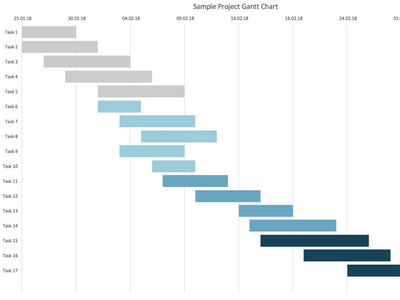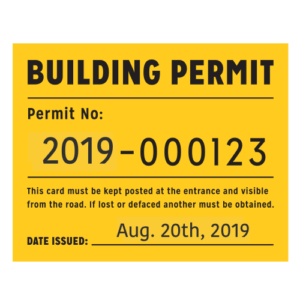
5 Strategies to Double Your House Flipping Profits
Real estate investing is a great way to put your money and talents to work for you. Unlike most investments available to the average person, real estate investing gives you a lot of control over the decisions that will determine your return on investment (ROI). Your first few house flips will be very hands-on, high-maintenance investment projects as you learn how the business works. There’s a steep learning curve, but if you build your way up with more and more ambitious projects over time, you’ll minimize your risk along the way.
The amount of profit you collect from a house flip is very dependent on good decision making. If you are just starting out, it’s a good idea to start small and with minimum risk so that your mistakes are recoverable and don’t eat away all of your profits. Think of the first property that you invest in as a “lab” class for Flipping Houses 101. The practical experience of evaluating the project, securing funding, building a team, choosing the right improvements, and managing the contractors will be more approachable on a smaller, entry-level house flip.

We see smart investors beginning with starter-sized homes that need mostly superficial rehabs. Paint, plumbing fixtures, light fixtures, and flooring are the typical improvements made in a lipstick house flip. All of these projects are manageable for a first time investor while exposing them to minimal risk. But what’s the next step for a real estate investor who wants to increase their profits?
Many real estate investors find moderate financial success with introductory-sized flips. After the first two or three successful projects of this size they look into ways of doing more flips per year to increase their profits. While this strategy does work, it also means more transfer fees, more property searching, and more location changes. Real estate investors who were daring enough to enter the industry get complacent and stop dreaming of the big profits. We encourage experienced, successful investors to consider the following strategies to make massive increases in a project’s ROI, beyond what the lipstick style rehabs can offer.
It’s time to up your game and gets the highest return on your investments! Warning: these strategies are for intermediate to advanced flippers only!
Increase Your Profits by Adding Square Feet to the House
When you are planning the renovations and improvements you will make to a property, you need to keep a close eye on the financial returns they will bring. If an expansion is planned in a smart and economical manner, adding square feet to the livable area of a home is one of the most reliable ways to increase the selling price.

When you or your realtor are looking at comparable homes in the area to come up with a realistic after repair value (ARV), the comparisons should include a price per square foot. Using this figure can help you determine if the new area you are planning will be worth it in the long run. You’ll also want to look at recently sold listings to see if buyers in the area are paying more for an extra bathroom or prefer and extra bedroom. Not all square footage is valued equally and preferences will change based on the neighborhood trends. A realtor with local expertise can be worth every penny in helping you make this decision. Also, make sure your listing features the extra space you’ve added that other homes in the area might be missing — it can really help your property appeal to buyers.
Tips for Maximizing Profit When Adding Square Feet:
-
- Don’t overspend: Most ground-up additions are going to be prohibitively expensive. The exceptions are if you are bringing a small home up to the neighborhood standard, or sneaking in an attached bathroom. Avoid having to pour new foundations or having to add support beams to lower floors.
 Make sure your work is permitted with time to spare: Un-permitted improvements are liabilities, not assets. Figure out the permitting procedures for your locality ahead of time so the process does not hold up other areas of your project. A permitting delay can eat into your profits very quickly.
Make sure your work is permitted with time to spare: Un-permitted improvements are liabilities, not assets. Figure out the permitting procedures for your locality ahead of time so the process does not hold up other areas of your project. A permitting delay can eat into your profits very quickly.- Leverage existing spaces: There are plenty of ways to increase the livable area of a home without going up or out. Look for unfinished spaces that could be put to use like an unfinished basement, spacious attic, unnecessary garage, or reclaimable porch. These areas are a bargain when it comes to adding square feet. Again, a local realtor might be able to help you by sharing successful ideas for improvements she’s seen in other properties nearby.
Increase Your Profits by Considering Larger Homes
While beginners are smart to stick to smaller projects, intermediate and advanced real estate investors may be missing out on opportunities if they don’t consider investing in larger, higher-end homes. A larger total value on a property means that you can increase the spread from purchase to sale at a greater scale than you can with smaller homes. Even if you stick to the same percentage increase overall, you’ll come away with a larger lump sum when the property sells.
 As with all investments, the key is to buy low and sell high. You can double your profits on a larger property with an aggressively low offer. Sellers are more likely to have a flexible sales price because the difference represents a smaller percentage of the total property value. At a higher price point, buyers are more likely to expect a home in perfect condition, so distressed, high-end homes can be an investor’s goldmine.
As with all investments, the key is to buy low and sell high. You can double your profits on a larger property with an aggressively low offer. Sellers are more likely to have a flexible sales price because the difference represents a smaller percentage of the total property value. At a higher price point, buyers are more likely to expect a home in perfect condition, so distressed, high-end homes can be an investor’s goldmine.
Of course, a larger property comes with more risk and more things to go wrong, so it’s a good idea to approach these only when you have a few flips under your belt. Minimize your risk by building your experience before graduating to the big leagues.
Tips for Maximizing Profits by Considering Larger Homes:
-
- Fixtures need to match the lifestyle: Builder-grade fixtures just won’t cut it in a larger, higher-end home. In fact, they can devalue your property because buyers will assume you have cut corners in other areas as well. Make sure that your taste in fixtures upgrades with the overall value of the property and communicates the quality of work you’ve done throughout the project. Don’t forget to budget for upgraded fixtures in your original calculations!
 Amenities are more likely to have positive ROI: Extra amenities don’t hold value in starter homes if they aren’t something the average buyer would add themselves. That’s not true for homes that are intended for people with higher, more disposable budgets. For example, a pool might turn buyers away from an entry level home, but it would be hard to sell a 6-bedroom home without a pool if all the neighbors have one. Fences, decks, wine cellars, hot tubs, sunrooms, tennis courts, and docks are all options that make sense for larger value properties.
Amenities are more likely to have positive ROI: Extra amenities don’t hold value in starter homes if they aren’t something the average buyer would add themselves. That’s not true for homes that are intended for people with higher, more disposable budgets. For example, a pool might turn buyers away from an entry level home, but it would be hard to sell a 6-bedroom home without a pool if all the neighbors have one. Fences, decks, wine cellars, hot tubs, sunrooms, tennis courts, and docks are all options that make sense for larger value properties.- Design and staging are necessary expenses: High-end buyers expect high-end finishes, well designed traffic flow, and cohesion among the various rooms of the home. You might consider bringing in a designer to direct the look and feel of the home. Buyers also expect to see the potential of the home with staging. Rented furniture can be expensive, especially if needed long term. You should include this expense in your initial budgeting, while also looking into options like virtual staging.
Increase Your Profits by Leveraging Your Special Skills
There are all kinds of distressed homes out there waiting to be purchased and flipped for profit. Some have water or fire damage, some need a new HVAC system, some have crumbling foundations, and some need a complete electrical rewiring — just to name a few. Any of these issues are costly enough to scare away most buyers, but some are prohibitive even for other investors. This is the perfect opportunity to match your special skill set and connections to a home in need of an intimidating rehab.
A menacing rehab will drive down the price of a property over time. As the seller becomes desperate to unload the property, your opportunity to acquire it at a bargain price will increase. As long as the issue that drives other buyers away matches you or your team’s abilities, you can leverage the skill to increase your profits.
Tips for Maximizing Your Profits by Leveraging Your Special Skills:
-
 A savvy realtor can amplify the home’s flaw for your benefit: A hard negotiator will keep your special skills close to her vest. This will allow her to push the seller into admitting the hardship the flaw causes and help her negotiate a better price for you. The seller doesn’t need to know that you aren’t concerned by the severity of the issue.
A savvy realtor can amplify the home’s flaw for your benefit: A hard negotiator will keep your special skills close to her vest. This will allow her to push the seller into admitting the hardship the flaw causes and help her negotiate a better price for you. The seller doesn’t need to know that you aren’t concerned by the severity of the issue.- Build a team that includes a high-cost specialist: In addition to your general contractor’s skills, it can be very profitable to bring a specialist into the partnership for the value of their skillset. Foundation experts, electricians, plumbers, architects, and HVAC technicians are all great options when building a house flipping team.
Increase Your Profits by Adding a Unit or Splitting a Lot

There is a lot of opportunity to increase the profits of a house flip by adding a unit or splitting a single lot into multiple units. As demographics change, municipalities are revisiting zoning rules that have sometimes limited the development of multi-family housing or prevented building on less than a minimum standard lot size.
You can capitalize on the trend of more permissive zoning by looking for large, divisible homes that are no longer desirable to the community, or homes on large lots that no longer make sense in a developing neighborhood. It’s very important to make sure that the zoning will permit splitting a property before you make an offer and also that you are ready to handle all the paperwork and fees it takes to accomplish a split. The profit calculations will be totally different for you depending on how you end up transforming the property.
Tips for Maximizing Your Profits by Adding a Unit or Splitting a Lot:
-
- Do your permit and zoning research before you make an offer: It’s better to lose a property to another buyer than to rush in and not be able to make the improvements you need to make to ensure your profits. There will always be another opportunity for you.
- Look for properties that have already been split in the area: Evidence that a split has already been done successfully is good proof of concept for you. It also indicates a willingness of the town to allow property division and/or rezoning.
- Avoid running new utility lines: Dividing a single home into apartments or condos is easier and less costly than dividing a parcel of land and having to run all new water, sewer, gas, and electrical lines from the main.
Increase Your Profits by Mastering Project Management
 Real estate investing is an expensive undertaking that requires a lot of capital to get started. Most investors, including intermediate and advanced flippers, turn to private lenders to finance the purchase and rehab of their properties. Borrowing from a private lender who specializes in fix and flip loans is a smart way to finance your deals while accessing their industry knowledge.
Real estate investing is an expensive undertaking that requires a lot of capital to get started. Most investors, including intermediate and advanced flippers, turn to private lenders to finance the purchase and rehab of their properties. Borrowing from a private lender who specializes in fix and flip loans is a smart way to finance your deals while accessing their industry knowledge.
Private lenders are willing to take on the risk of lending on the potential of a project in exchange for a higher interest rate than a bank would charge for a traditional mortgage. This means that you are paying a significant amount of interest for each and every day that you are borrowing money from them, until you pay them back at closing.
Smart investors learn how to efficiently schedule contractors, pre-apply for permits, pre-order supplies, and aggressively price and market their properties for quick sale. Each day saved equates to less money that owed to your lender in interest. Expert level project management skills can save you thousands of dollars by reducing the total interest you end up paying on a project. Those savings go directly towards your profits.
Tips for Maximizing Your Profits by Mastering Project Management
-
- Learn how to make a Gantt chart. These charts are perfect for project management and help you visualize all the different, overlapping events that need to happen on time.
- Don’t reinvent the wheel. All real estate investors need a good project management system. It’s a great idea to talk with other investors to see what they have done to save time and keep a project on or ahead of schedule. There are even pre-build templates and tools you can implement like FlipperForce.
- Incentivize your team to stick to the schedule. Offer each contractor a cash bonus for finishing on time according to your plan. If you are saving thousands on interest it’s worth it to pay a few hundred to your team to help motivate them. Plus, everyone likes a bonus!


 Make sure your
Make sure your  Amenities are more likely to have positive ROI:
Amenities are more likely to have positive ROI: A savvy realtor can amplify the home’s flaw for your benefit:
A savvy realtor can amplify the home’s flaw for your benefit: